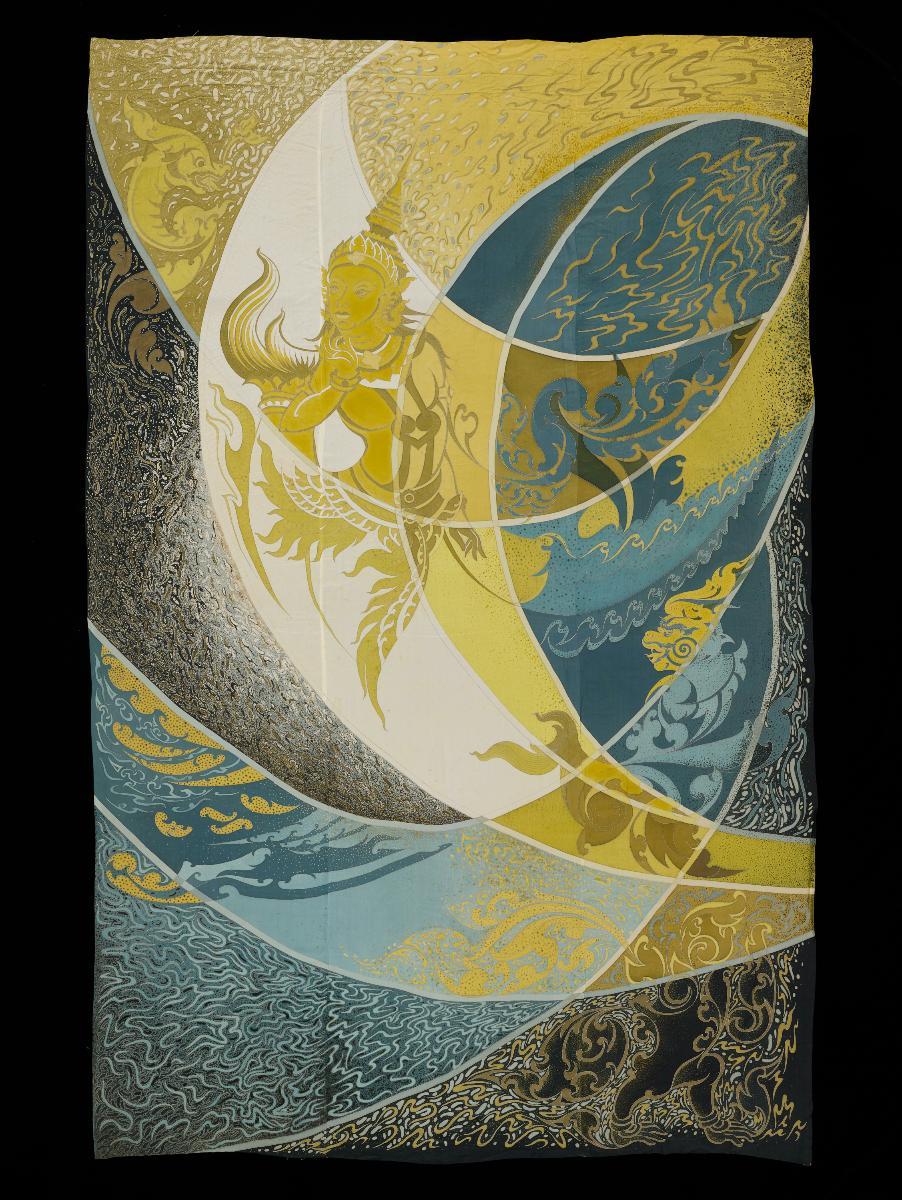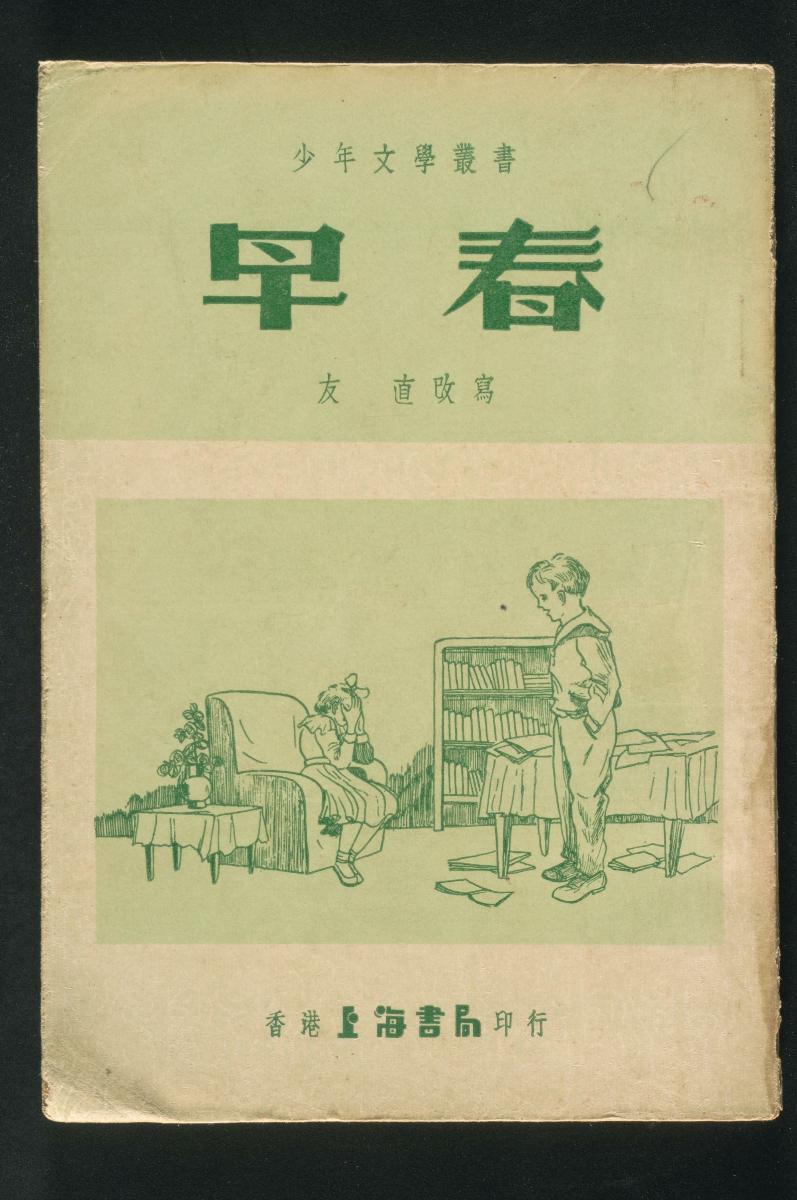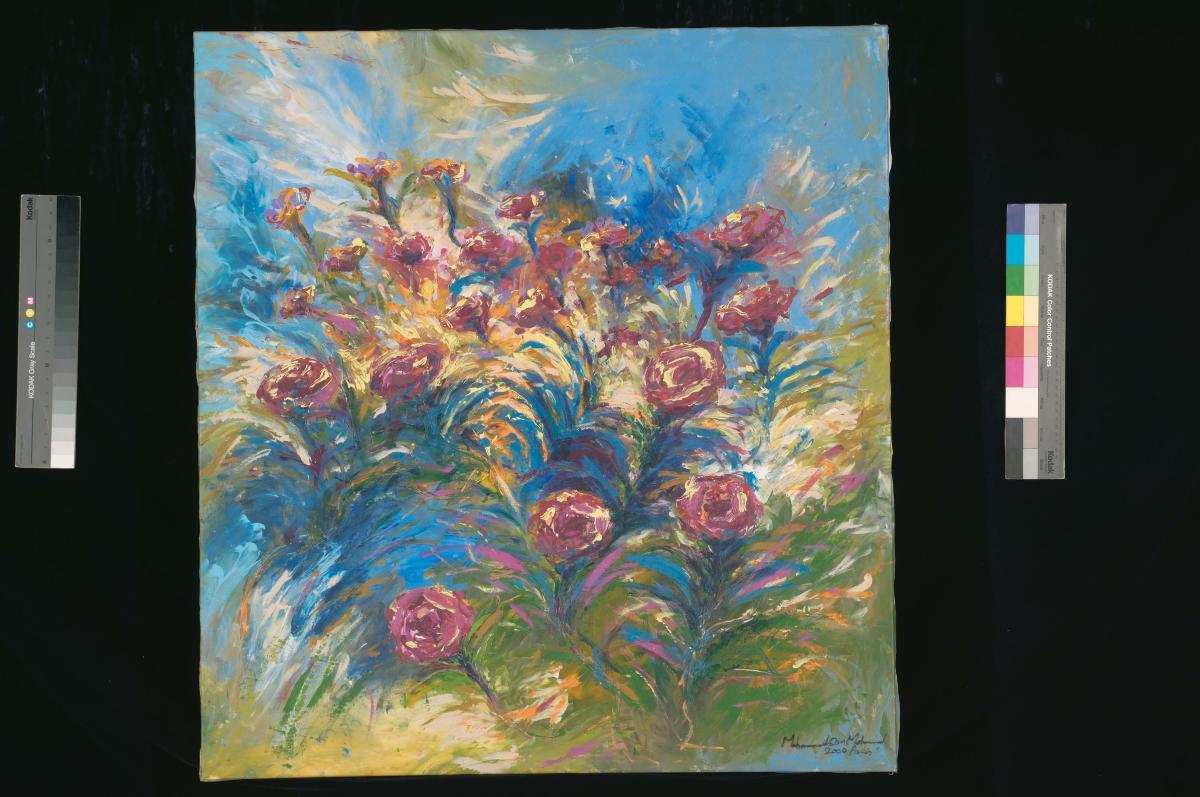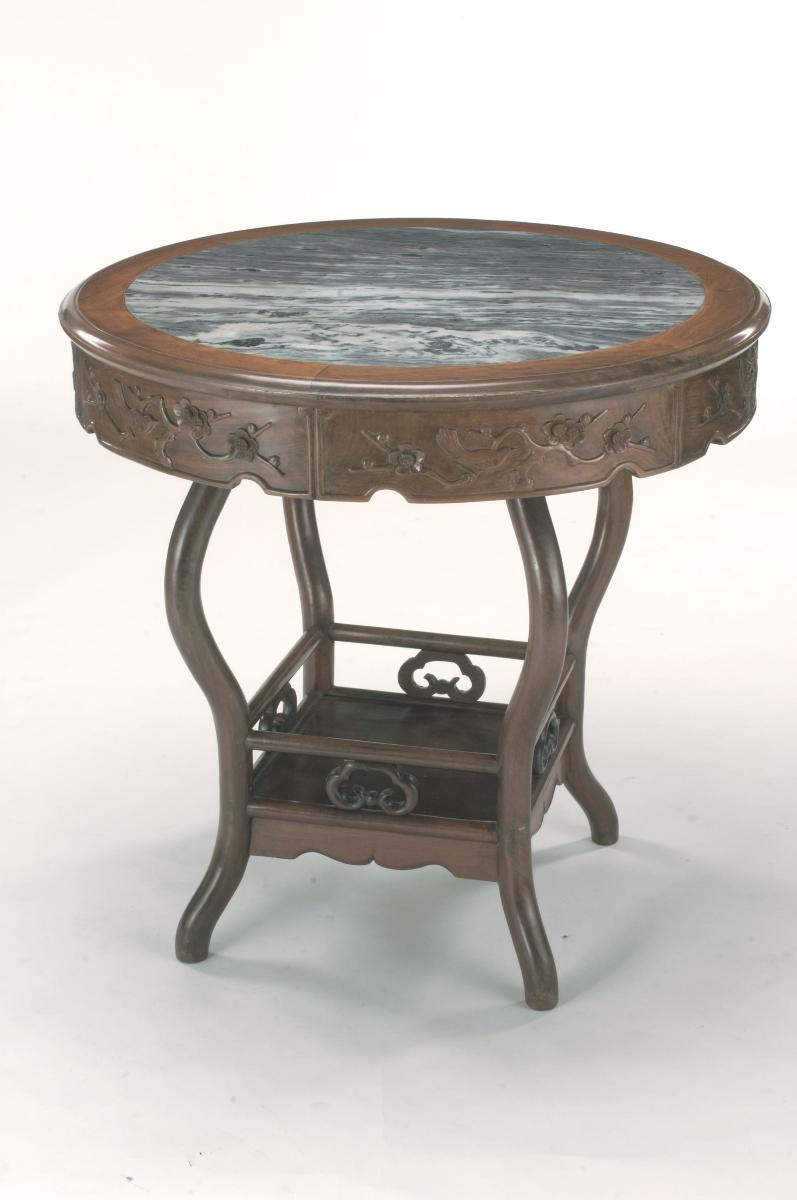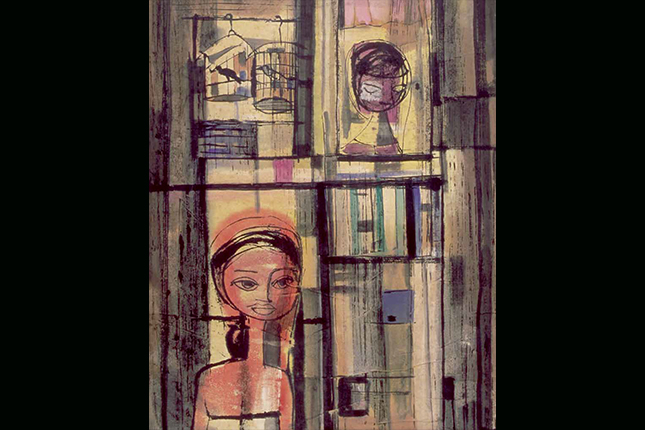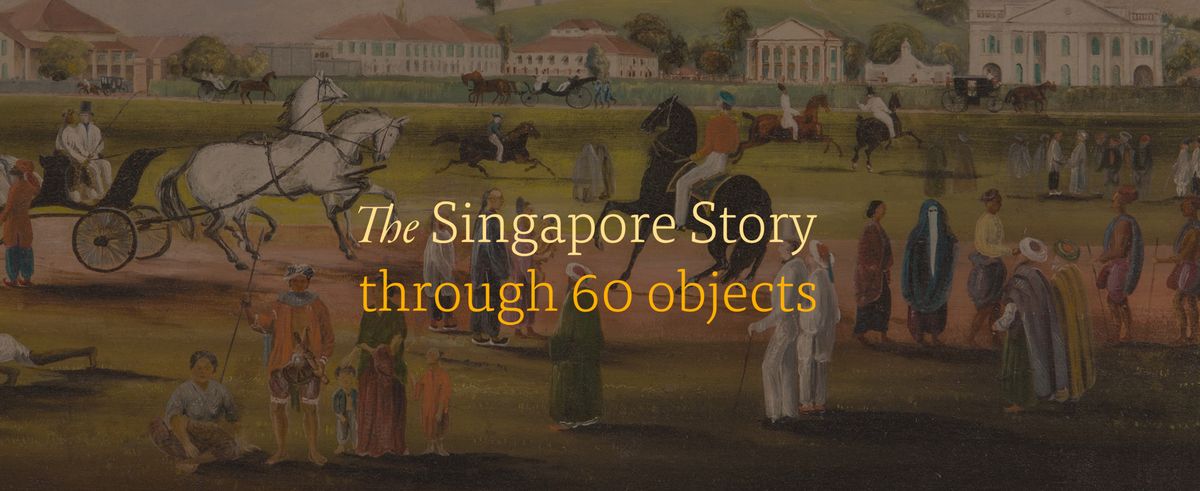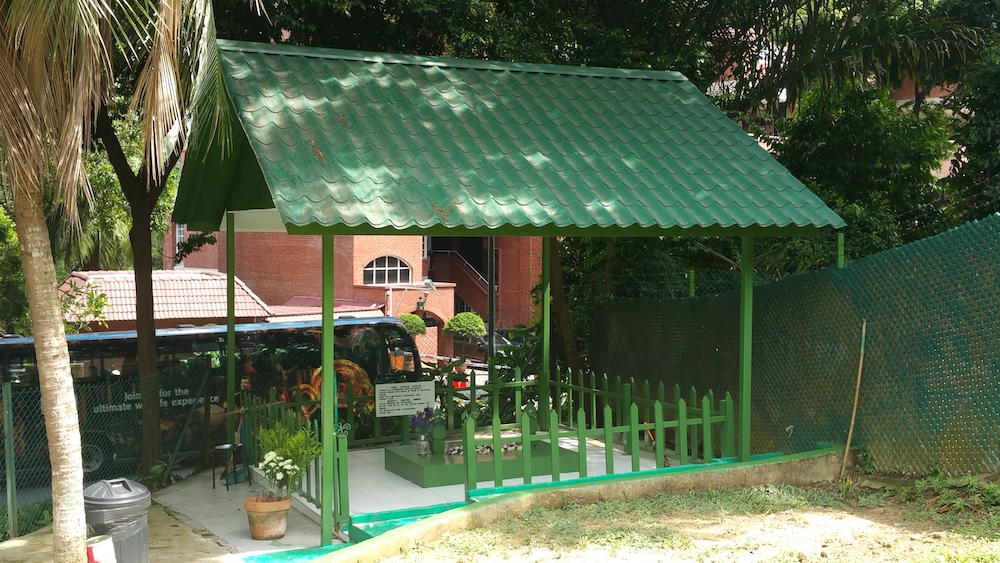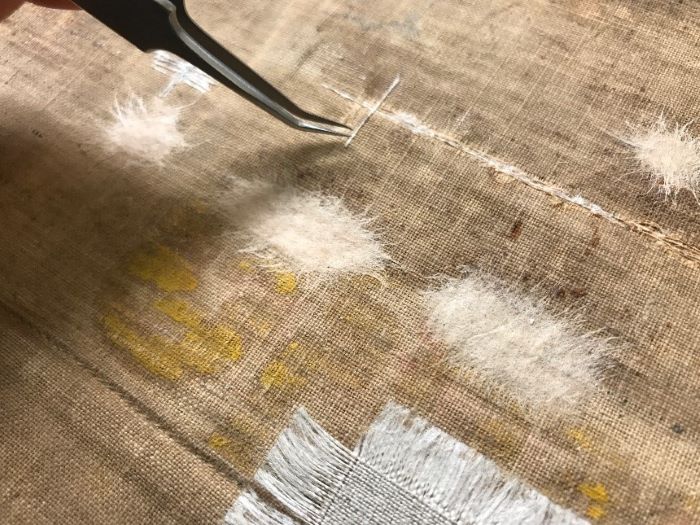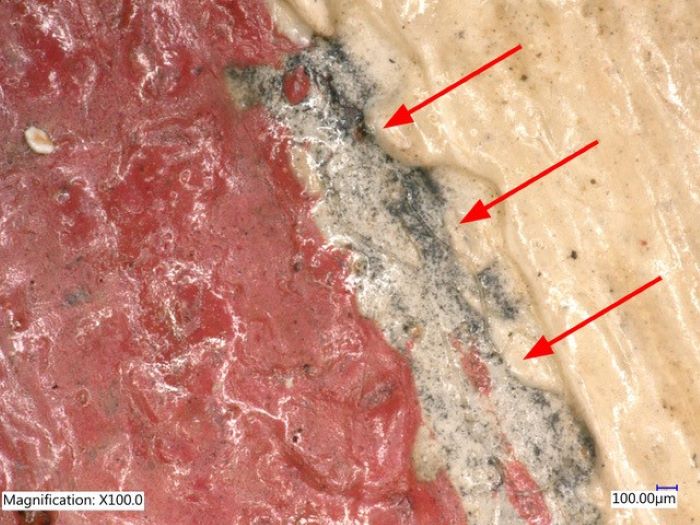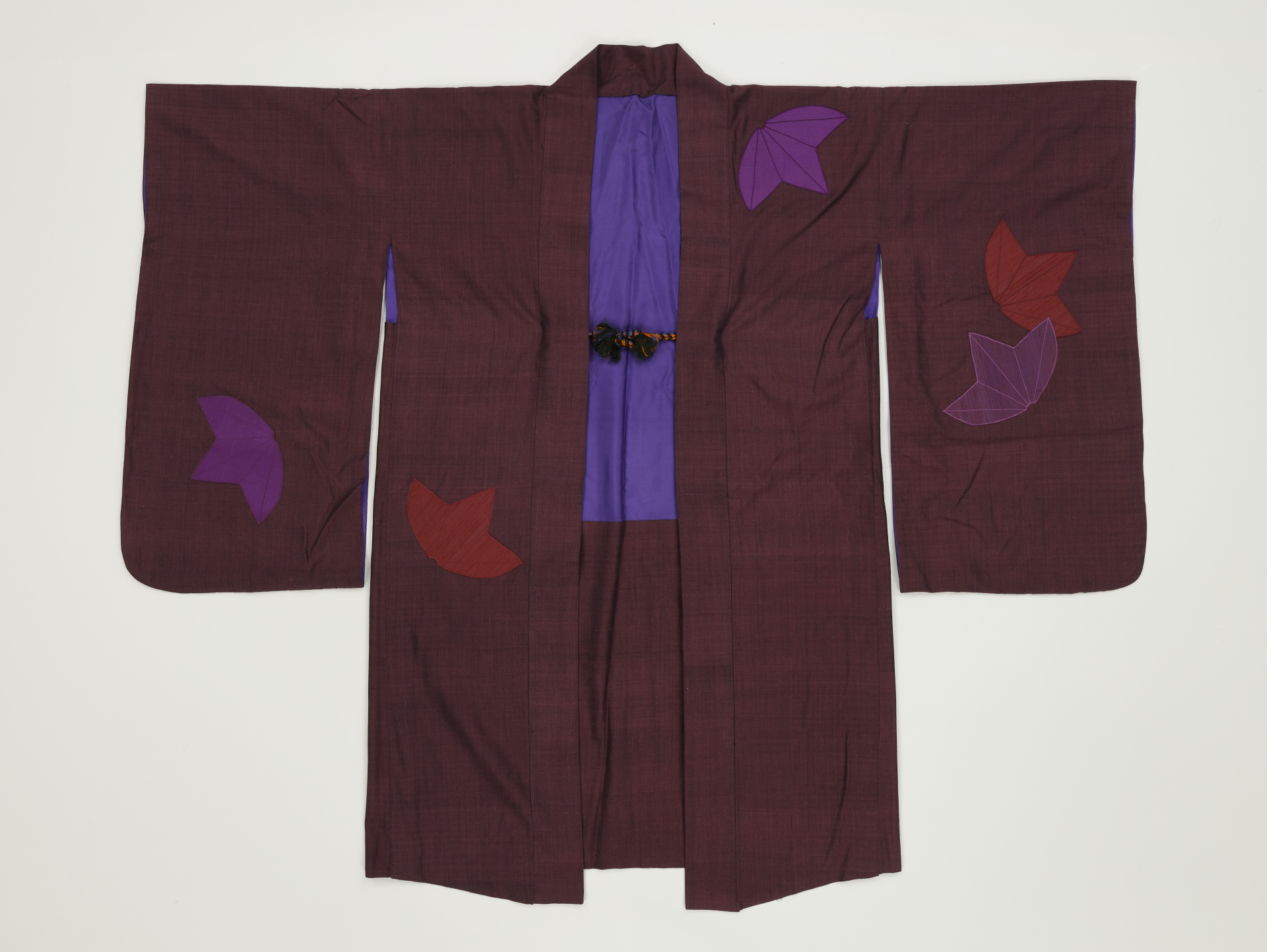Long Sophea was among the most prominent and influential artists in Cambodia during the late 1990s and early 2000s, a period which saw the emergence of new artistic approaches (“contemporary art”) there, as well as the re-entry of Cambodia into regional and global networks for art, such as biennales, after decades of isolation due to civil war and genocide. During this period, Sophea was the only exhibiting artist in Cambodia working in textiles, and also the most prominent artist in Cambodia who was a woman. Sophea was also one of the only women among a group of around 25 Cambodian artists sent for postgraduate study in the former Soviet Union. She studied in Moscow, writing a Masters dissertation in Russian on aspects of textile arts and Khmer aesthetics, and graduating from the from the Moscow Institute of Industrial and Fine Arts in 1992. The artist’s largest work, Spring was made in Moscow, for Long Sophea’s Master’s graduation exhibition. The work depicts swirls of waves, naga forms, and fish encircling the central figure of Sovanmacha, a character from the Reamker (the Cambodian Ramayana). The artist explained that, for her, Sovanmacha “stands for purity, beauty, hope, forgiveness, pity…and daring”. Sovanmacha is the daughter of Reap, the demon king of Lanka, and is thus born into evil. But, for Long Sophea, “even though this character has a bad father and holds much power herself, she chooses the road to goodness.” Sovanmacha is the queen of the seas, and thus controls the passage between Lanka and and the mainland, which connects Ream from his stolen wife. It is Sovanmacha who agrees to Hanuman’s request to calm the waters and allow the monkey army to pass. Eventually, Sovanmacha and Hanuman marry and have a son who is pictured on the lower right of Sophea’s artwork.The piece was inspired by the artist’s study of Chaktomuk Conference Hall, a building designed by Vann Molyvann in 1961, and was intended by the artist to be displayed there. Perhaps like Molyvann’s architecture, Sophea explains that in Spring, the “technique is modern” while the “theme is traditional.”




